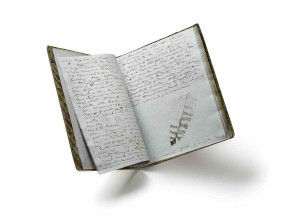Blaschka's Sea Creatures on Exhibit
Over the holiday week, I took a trip to Corning, New York, home of the Corning Museum of Glass. My primary intention was to see the collection of antique microscopes on exhibit (and featured in our fall 2016 issue). Revealing the Invisible: The History of Glass and the Microscope, on display in the museum's Rakow Research Library, looks at the scientists and artists who developed and refined microscopy between the 1600s and the late 1800s. It is a neat exhibition that spotlights the ingenuity of these pioneers, and it remains up through March 19.  It was another exhibition, however, that really surprised me. Fragile Legacy: The Marine Invertebrate Glass Models of Leopold and Rudolf Blaschka, unfortunately soon to close, explores the artistry and business of the German father and son who crafted astonishing glass models of sea creatures in the mid-to-late nineteenth century. From their initial drawings, based on illustrated books or preserved specimens, to their glass creations, to the printed catalogue used to sell their models to universities and museums, the exhibition peeks into a wondrous world. The examples on exhibit belong to Cornell University, which ordered 570 models in 1885.
It was another exhibition, however, that really surprised me. Fragile Legacy: The Marine Invertebrate Glass Models of Leopold and Rudolf Blaschka, unfortunately soon to close, explores the artistry and business of the German father and son who crafted astonishing glass models of sea creatures in the mid-to-late nineteenth century. From their initial drawings, based on illustrated books or preserved specimens, to their glass creations, to the printed catalogue used to sell their models to universities and museums, the exhibition peeks into a wondrous world. The examples on exhibit belong to Cornell University, which ordered 570 models in 1885.
 If you can't make it to Corning this week--the exhibition closes on January 8--marine filmmaker David Brown made a thirty-minute, award-winnning documentary about the Cornell Blaschka collection and how the models might now provide perspective on biodiversity and climate change.
If you can't make it to Corning this week--the exhibition closes on January 8--marine filmmaker David Brown made a thirty-minute, award-winnning documentary about the Cornell Blaschka collection and how the models might now provide perspective on biodiversity and climate change.
Images: (Above) Blaschka Nr. 573, Octopus salutii (1885). Photo credit: C. Barry; (Below) Catalogue of Glass Models of Invertebrate Animals (Rochester, New York, 1878). This catalogue featured 630 Blaschka models, with prices ranging from twenty cents to seven dollars. Photo credit: C. Barry.















